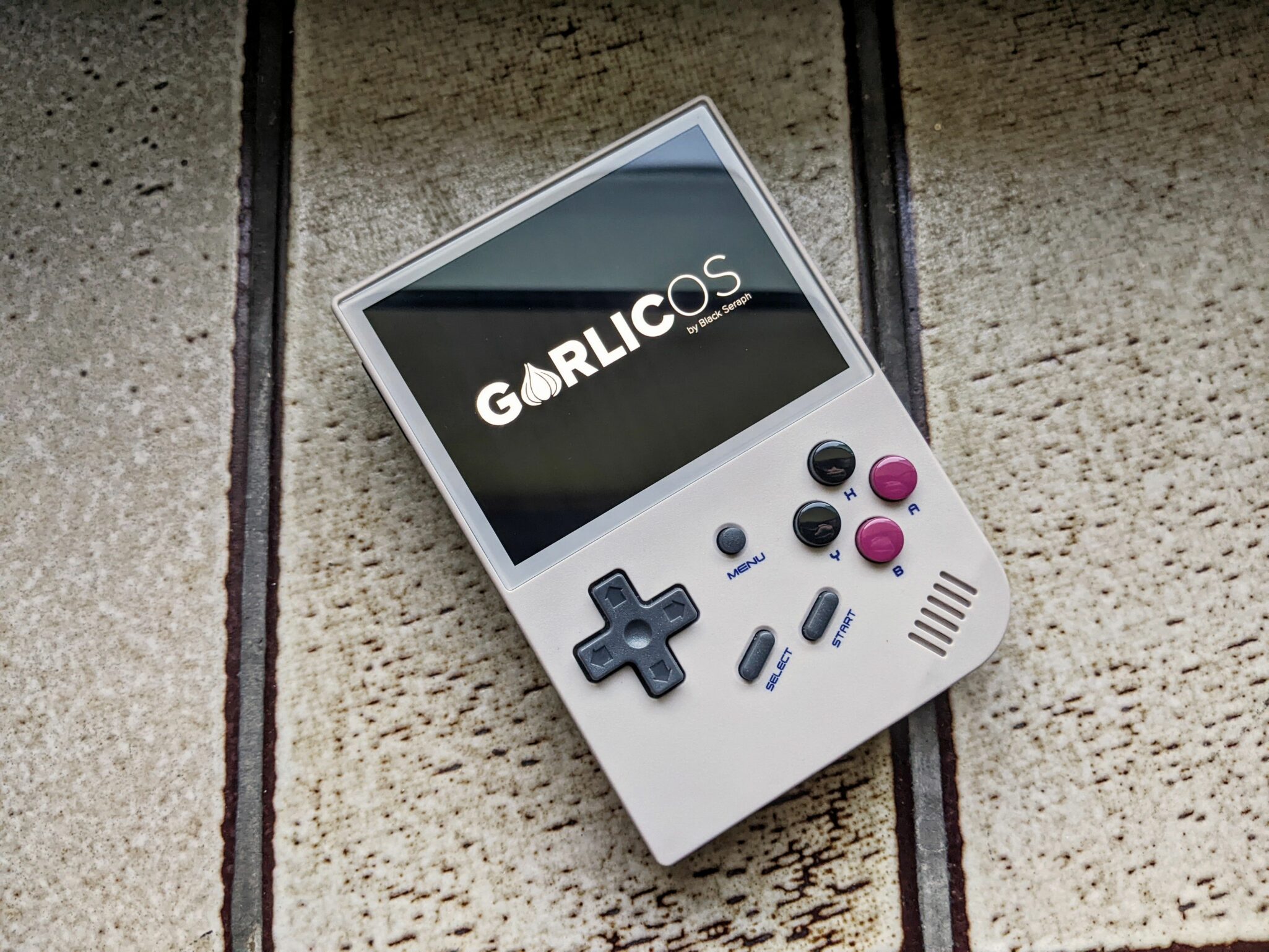Handheld gaming consoles have been a source of entertainment and nostalgia for gamers of all ages. The RG35XX, a handheld game console known for its potential and capabilities, has taken a significant leap forward with the introduction of Garlic OS. This dedicated operating system has breathed new life into the RG35XX, making it a more formidable player in the saturated handheld gaming market.
Garlic OS: A Game-Changer for RG35XX
The original operating system of the RG35XX was functional but lacked the finesse and performance required to truly harness the console’s potential. Emulation, stability, and additional features were lacking, which prompted the need for an alternative. Enter Garlic OS, a custom operating system developed by Black Seraph. Having already made a mark with projects like Caster and other aftermarket firmware, Black Seraph set out to craft an OS that would truly empower RG35XX handheld gamers.
Embrace of Continuous Improvement
Since the release of Garlic OS, updates have been flowing steadily, nearly every week, indicating a strong commitment to improvement and user satisfaction. As of now, the OS has reached version 1.4.9, a testament to the ongoing dedication of its developers. Black Seraph has described Garlic OS as a fast and user-friendly system, designed to feel familiar to those accustomed to the Mini Onion OS. This familiarity fosters a seamless transition for users while providing a natural evolution from previous retro arcade ports for the RG35XX.
Enhancements Galore
The new OS brings forth a slew of enhancements and fixes that elevate the RG35XX experience. These include fully functional sleep mode, improved button mapping, a refreshed user interface, and several under-the-hood bug fixes. Black Seraph has gone to great lengths on his main page to detail the comprehensive list of updates, showcasing a deep commitment to transparency and user engagement.
Transitioning to Garlic OS
Transitioning to Garlic OS from the stock RG35XX operating system is a straightforward process. There are plenty sources explaining how to install and run Garlic OS. For example retrogamecorps provides a detailed walkthrough for the setup. It involves downloading necessary software like FAT32 Formatter, 7-Zip or WinRAR, Belina Etcher, and Disc Genie. These tools facilitate the extraction and installation of the Garlic OS image onto an SD card.
Unlocking the Full Potential
Garlic OS opens the door to improved gameplay, better emulation, and a more intuitive user experience. The addition of custom themes, color modes, and settings tweaks further customize the experience to suit individual preferences. By holding down the home button, users can access shortcuts, and by tapping the home and X buttons together, a plethora of additional customization options become available through the Retro Arc menu.
Looking Ahead
The RG35XX, with Garlic OS at its core, is poised to become a more versatile platform for gaming enthusiasts. The operating system’s commitment to regular updates and enhancements promises an exciting future for the handheld console. There’s even speculation about potential compatibility with DS and N64 titles, as well as Linux ports for PC gaming aficionados.
In conclusion, the RG35XX handheld game console has received a significant boost in performance, stability, and user experience through the introduction of Garlic OS. The collaboration between the gaming community and the developer, Black Seraph, has resulted in a robust and evolving operating system that transforms the RG35XX into a more capable gaming device. With its seamless user interface, improved emulation, and continuous updates, Garlic OS is a must-try for anyone seeking an enhanced handheld gaming experience. So, if you’re a fan of portable gaming and looking to make the most of your RG35XX, it’s time to embrace the flavorful upgrade that Garlic OS brings to the table.

The future is here and it is bright: GarlicOS 2.0
The journey began with a debut on the RG35XX handheld, which turned out to be a sleeper hit. This initial success opened the door to understanding what gamers love and what could be improved on these devices. However, there was a challenge: GarlicOS was heavily tied to RG35XX hardware. Every component, from framebuffer scaling to control handling, was meticulously designed for this specific device.
Recognizing the limitations of such a device-specific approach, the developer embarked on creating GarlicOS 2.0. The goal? To build the first truly cross-platform retro-handheld OS that could adapt to a variety of devices, old and new.
Navigating the Complexities
Bringing cross-platform compatibility required overcoming obstacles. One major hurdle was accessing kernel source codes and drivers. With various hardware manufacturers exhibiting varying levels of cooperation, the developer had to find solutions that wouldn’t compromise the user experience. This led to the establishment of requirements that focused on maintaining compatibility while making the system more accessible:
- Compatibility with stock kernels: GarlicOS 2.0 had to operate without modifying the stock kernel, ensuring a smooth experience on various devices.
- ExFAT MicroSD card boot: Enabling booting from ExFAT MicroSD cards simplified file transfers across Windows, Linux, and Mac systems.
- Daisy-chained bootloader: For devices lacking native MicroSD card boot or ExFAT support, a device-specific bootloader was implemented, allowing crucial hardware specifications to be communicated to the core OS.
- Unified OS image: The same core operating system image applies to all supported devices, ensuring consistent performance.
Unisoc SoCs: A Special Challenge
The developer’s dedication led them to tackle even the most challenging situations. Enter Unisoc SoCs, also known as Spreadtrum, which are prevalent in various affordable handhelds. Despite their performance potential, these chips proved to be a proprietary maze. Their unique audio co-processor posed significant audio-related hurdles, forcing the developer to reverse-engineer solutions.
This led to a deeper understanding of Unisoc’s complexities, particularly the AGDSP co-processor’s idiosyncrasies. From custom initialization sequences to non-standard period sizes, the journey was anything but straightforward. However, the aim was clear: to create a stable, bug-free experience for users, even if it meant delaying the release.
A Promise to the Community
The developer’s commitment to the community is evident not just in the creation of GarlicOS, but also in how it’s shared and supported. GarlicOS 2.0 will be released for free on GitHub, with all source code available. To sustain this project, the developer plans to release pre-built bootloader images for new devices, allowing supporters early access before the public release. Crucially, the core operating system image remains untouched by monetization.
In Closing, A Thank You
Black-Seraph acknowledges the journey’s challenges, from coding conundrums to writing this very article. Grateful for the community’s support, they express their dedication to delivering a seamless gaming experience. While the process might be complex, the promise is clear: GarlicOS is set to revolutionize the retro handheld gaming landscape.
As Black-Seraph concludes, “Wish me godspeed. I’ll keep you guys posted.” The community eagerly awaits the next chapter in this remarkable journey of innovation and dedication.
